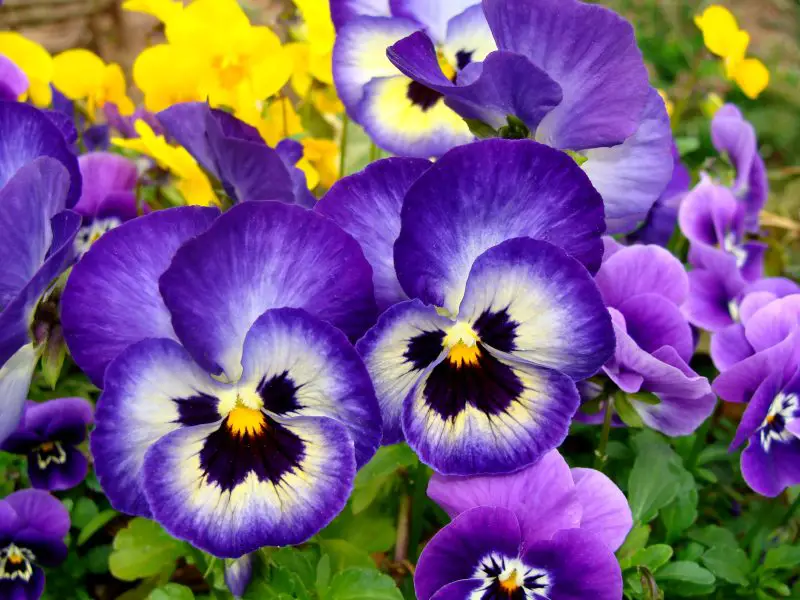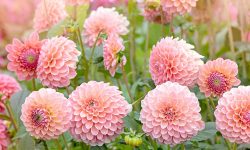Pansies are more than just cheerful blooms that brighten up flower beds and containers—they are a gardener’s reliable companion for three-season color. Known for their wide range of colors, charming “faces,” and delicate fragrance, pansies are a favorite in gardens across the world. Whether you’re planting them in the spring, fall, or even over winter in mild climates, their resilience and beauty make them a top pick for both beginner and experienced gardeners.
But behind every successful pansy display is proper care. Knowing how to care for pansies means understanding their growing needs, seasonal behaviors, and how to handle common challenges. With the right approach, your pansies can last longer, bloom more vibrantly, and enhance your garden with minimal fuss. This comprehensive guide will walk you through everything from planting and watering to troubleshooting and seasonal maintenance, so you can enjoy lush, long-lasting pansy blooms throughout the growing season.
Understanding Pansies: Basics Every Gardener Should Know

What Are Pansies?
Pansies are cool-season flowering plants that belong to the Viola genus. They are hybrids derived mainly from Viola tricolor, commonly known as Johnny-jump-up. Pansies are instantly recognizable for their five-petaled flowers that often feature striking blotches in the center, resembling a face. Their compact growth habit and variety of vibrant colors—from deep purples to sunny yellows—make them ideal for garden beds, window boxes, and hanging baskets.
Are Pansies Annual or Perennial?
Pansies are technically short-lived perennials but are most commonly grown as annuals or biennials depending on the climate. In cooler zones, they bloom profusely during spring and fall before dying back in summer heat or freezing winter. In milder climates, especially USDA zones 7 to 10, pansies can overwinter and bloom again in early spring, effectively behaving as biennials.
Why Gardeners Love Pansies
Their popularity stems from more than just good looks. Pansies are versatile, easy to care for, and highly rewarding. They thrive in containers, borders, and mixed flower beds, making them a flexible option for gardeners with different types of spaces. Additionally, their early-season bloom time brings much-needed color when most other plants are still dormant. Some varieties are even edible, adding beauty to salads or desserts.
The Ideal Conditions for Growth
Pansies prefer cool temperatures, making them excellent for early spring or fall planting. They thrive in full to partial sun with rich, well-drained soil. High heat can cause them to become leggy and stop blooming, while too much shade may result in sparse flowers and weak stems. Moisture is key—but not soggy conditions. Understanding these environmental preferences is the first step in helping pansies grow strong and bloom beautifully throughout the season.
Choosing the Right Pansy Varieties for Your Garden
Understanding the Different Types of Pansies
Pansies come in a wide array of varieties that differ in flower size, color range, and growth habits. Some are bred for their large blooms and bold colors, while others are compact and ideal for smaller spaces or containers. Gardeners typically choose between two main groups: large-flowered pansies and multiflora pansies. Large-flowered types offer eye-catching blooms, often with “faces,” while multiflora types produce more blooms per plant and are better suited to tough weather conditions.
Popular Varieties and Their Features
Some of the most well-known pansy series include Majestic Giants, known for their oversized flowers; Delta Series, which are uniform, early-blooming, and great for colder climates; and Cool Wave Pansies, a trailing variety perfect for hanging baskets. If you want continuous color in your garden, consider mixing pansies with violas, which are smaller but often more cold-tolerant and longer blooming.
Climate Considerations When Choosing Varieties
Your local climate plays a key role in choosing the right pansy variety. In warmer regions like USDA zones 8 to 10, opt for heat-tolerant or trailing pansy types that can handle mild winters and early springs. In colder zones (5 to 7), choose varieties known for their cold hardiness and early bloom capabilities. The Delta and Matrix series, for example, are bred to withstand unpredictable spring weather, making them ideal for northern gardeners.
Matching Varieties to Garden Design
Some pansy types are more upright and formal, perfect for symmetrical flower beds, while others have a cascading growth habit that suits hanging baskets, containers, and window boxes. Consider your design goals when choosing varieties. For bold color splashes, go with a uniform series in a single shade. For a wild, cottage-style garden, mix and match different types to create a more natural look.
Best Time to Plant Pansies for Maximum Bloom
Fall Planting for Southern and Mild Winter Regions
In warmer climates such as USDA zones 8 to 10, the ideal time to plant pansies is in the fall, typically from late September to early November. Planting in autumn allows pansies to establish strong roots during the cooler months, and they will begin blooming through winter and explode with color in early spring. With proper care, fall-planted pansies in these zones can thrive and bloom continuously for up to eight months, making them a valuable addition to cool-season gardens.
Spring Planting for Northern and Cold Winter Climates
In cooler climates—zones 4 to 7—pansies are best planted in early spring, as soon as the soil is workable and the threat of hard frost has passed. This often falls between late March and mid-April, depending on your region. Pansies are cold-tolerant and can handle light frost, but severe freezes after planting can stunt growth. By planting early in spring, gardeners can enjoy blooms from late spring through early summer, until the heat becomes too intense.
Timing Considerations for Containers and Indoor Starts
If you’re growing pansies in containers or starting seeds indoors, you have a bit more flexibility. Seeds should be started indoors about 10 to 12 weeks before your last expected frost. This gives the seedlings enough time to grow strong and be ready for transplanting once outdoor conditions improve. For fall containers in warmer climates, you can plant nursery-grown pansies in early fall and enjoy them through the holidays and into spring.
Understanding Local Conditions for Perfect Timing
Every region has its own quirks when it comes to weather, so checking your local frost dates and average temperatures is essential. If you’re unsure when to plant, visit a nearby garden center—they usually stock pansy plants just before the ideal planting time for your area. Keeping an eye on your local weather forecasts and soil temperature helps ensure your pansies get the best possible start.
Watering Needs and Best Practices for Healthy Pansies
Understanding How Much Water Pansies Really Need
Pansies thrive in consistently moist but not soggy soil. These cheerful blooms prefer moderate watering—enough to keep the root zone evenly damp, but not so much that the soil becomes waterlogged. On average, pansies need about one inch of water per week from rainfall or supplemental watering, though this may vary depending on your climate, soil type, and planting location.
In cooler months, especially in fall and early spring, pansies require less frequent watering due to lower evaporation rates. However, in warmer temperatures or when grown in containers, their shallow roots dry out quickly and need closer monitoring.
Best Time of Day to Water Pansies
The ideal time to water pansies is early in the morning. Morning watering gives the plants time to absorb moisture before the sun grows intense, reducing the risk of leaf scorch and water loss due to evaporation. It also allows the foliage to dry during the day, which helps prevent fungal diseases like powdery mildew or root rot.
Avoid watering in the evening, especially in humid climates, as overnight moisture on leaves and soil can promote disease development.
Proper Watering Technique for Ground and Container-Grown Pansies
For in-ground pansies, use a gentle stream or soaker hose to apply water directly to the soil surface around the base of the plants. This method helps avoid wetting the leaves, which can lead to fungal problems. Water deeply so that moisture reaches the roots, encouraging them to grow downward and establish firmly.
In containers or hanging baskets, check soil moisture daily by feeling the top inch of soil. If it feels dry to the touch, it’s time to water. Ensure containers have proper drainage holes to prevent excess water from pooling, which can quickly lead to root rot in pansies.
Adjusting Watering Frequency with Weather Changes
As the seasons shift, so should your watering routine. During rainy spells, reduce watering to avoid over-saturating the soil. In hot or windy conditions, you may need to water more often to compensate for rapid evaporation.
For gardeners in arid climates, consider using mulch around pansy beds to help retain soil moisture and reduce the need for frequent watering. In cooler regions, be cautious not to overwater when daytime temperatures are still low.
Fertilizing Pansies for More Blooms and Healthy Growth
Why Fertilizing Is Essential for Pansy Performance
Although pansies are relatively low-maintenance, consistent feeding significantly boosts their flowering capacity and overall health. Because pansies are heavy bloomers, they use up nutrients quickly, especially in container plantings or flower beds with depleted soil. Fertilizing ensures they have the energy to produce vibrant flowers and lush foliage throughout the growing season.
A well-fed pansy plant not only blooms longer but also resists pests, diseases, and stress from fluctuating weather conditions. Without proper nutrition, pansies can become leggy, discolored, and weak.
Choosing the Right Fertilizer for Pansies
The best fertilizer for pansies is a balanced formula with equal or nearly equal parts nitrogen (N), phosphorus (P), and potassium (K). A general-purpose 10-10-10 or 14-14-14 fertilizer works well for most garden beds. However, if you’re growing pansies primarily for their flowers, consider a bloom booster with slightly higher phosphorus content, like 10-15-10, to enhance flower production.
Organic options such as compost, well-rotted manure, or fish emulsion can also be highly effective, especially for gardeners aiming for a natural approach. These improve soil health over time and provide a steady release of nutrients.
When and How Often to Fertilize
Start fertilizing your pansies a week or two after transplanting or once seedlings are well established. For in-ground pansies, apply granular fertilizer every four to six weeks, or as recommended on the product label. Water-soluble fertilizers can be applied more frequently, about every two weeks, diluted to half strength to prevent overfeeding.
Container-grown pansies benefit from more frequent feeding due to quicker nutrient depletion. Use a water-soluble fertilizer every 10 to 14 days, and flush the soil occasionally with plain water to prevent salt buildup, which can harm roots.
How to Apply Fertilizer Correctly
Apply granular fertilizers evenly around the base of the plants, avoiding direct contact with stems and leaves to prevent burning. Lightly scratch the granules into the top inch of soil and water thoroughly afterward to help nutrients penetrate the root zone.
For liquid or water-soluble fertilizers, mix according to the label directions and apply at the base of each plant using a watering can or hose attachment. Make sure the soil is already moist before fertilizing to minimize root stress.
Signs of Over-Fertilizing and How to Avoid It
Too much fertilizer can be just as harmful as too little. Over-fertilized pansies may develop dark green foliage but produce fewer flowers. You might also notice burned leaf edges, salt crust on soil surfaces, or stunted root growth.
To avoid overfeeding, always follow label instructions and observe your plants closely. When in doubt, it’s safer to under-fertilize slightly than to overdo it. Remember, consistent light feeding yields better results than occasional heavy doses.
Deadheading and Pruning Pansies to Encourage More Blooms
The Importance of Deadheading for Continuous Flowering
Deadheading is the simple process of removing spent or faded flowers to redirect the plant’s energy into producing new blooms instead of forming seeds. For pansies, this practice is especially important because it encourages continuous flowering and keeps the plant looking neat and vibrant.
When you leave faded flowers on the plant, it begins to divert its energy into seed production, which signals the plant to slow down or stop blooming altogether. By removing these spent blooms promptly, you help the plant stay in a productive, flowering phase longer.
How to Deadhead Pansies Properly
Deadheading pansies is easy and doesn’t require any special tools. Use your fingers or a small pair of garden scissors to pinch or snip the flower stem just above the nearest set of healthy leaves. Be sure to remove the entire flower stem and not just the petals, as the seed pod forms at the base.
Perform deadheading regularly, ideally every few days, especially during peak blooming periods. This not only keeps your pansy plants flowering but also helps prevent fungal issues by improving air circulation.
Pruning Leggy or Overgrown Pansy Plants
As the season progresses, pansy plants can sometimes become leggy, with long, spindly stems and sparse foliage. This usually happens due to too little light, excessive warmth, or aging growth. When this occurs, gentle pruning can help restore a compact and fuller appearance.
To prune leggy pansies, use clean scissors to trim back the longest stems by about one-third, cutting just above a leaf node. This encourages bushier growth and allows new buds to form near the base. After pruning, give your pansies a light dose of fertilizer and water well to help them bounce back.
Seasonal Pruning for Long-Term Health
In addition to routine deadheading, a light mid-season trim can rejuvenate your pansies if they start looking tired in the heat of summer. Prune away any damaged, yellowed, or diseased leaves and faded flowers, and allow the plant to rest in partial shade during high temperatures.
In cooler climates or during fall planting, regular deadheading and light pruning can keep pansies blooming well into early winter. These practices also help prevent fungal issues by removing debris and improving airflow around the plant.
Watering Pansies the Right Way for Lush Growth and Blooms
How Often Should You Water Pansies?
Pansies thrive in moist but well-drained soil. The frequency of watering depends on the climate and soil conditions. In cooler weather, watering two to three times a week is usually sufficient. During warm or windy days, you may need to water more often, especially for pansies planted in containers, which tend to dry out faster than garden beds.
The key is to keep the soil consistently moist without becoming soggy. Check the top inch of soil with your finger—if it feels dry, it’s time to water.
Best Time of Day to Water Pansies
Morning is the ideal time to water pansies. Early watering allows the plant to absorb moisture before the heat of the day and ensures that the leaves have time to dry, reducing the risk of fungal diseases like powdery mildew or root rot.
Avoid watering in the evening, especially if the weather is cool and damp. Wet leaves and soil overnight can create the perfect conditions for disease development.
How Much Water Do Pansies Need?
Pansies require about one inch of water per week from rain or irrigation. When watering by hand or using a hose, aim for deep, slow watering that reaches the root zone. Shallow or frequent sprinkling may keep the surface damp but won’t support deep root development.
If you’re growing pansies in containers, make sure your pots have drainage holes to prevent standing water, and monitor them daily during hot or dry weather.
Tips to Avoid Overwatering
To prevent overwatering your pansies, it’s important to develop a consistent but responsive watering routine. Start by always checking the soil before watering again—insert your finger about an inch into the soil and only water when it feels dry. Ensure that your garden beds or containers have proper drainage so excess water can escape freely. If you’re growing pansies in pots, choose containers with holes at the bottom and avoid letting water collect in trays underneath. After heavy rain, inspect the area around your pansies and make sure they’re not sitting in puddles or soggy patches. During cool, cloudy, or rainy periods, reduce watering frequency to avoid waterlogged conditions. By observing your plants and adjusting based on the weather and soil moisture, you’ll create the ideal balance that keeps pansies healthy and blooming without drowning their roots.
Feeding and Fertilizing Pansies for Maximum Flower Power
To achieve lush growth and abundant blooms, pansies need regular feeding with the right type of fertilizer. Begin by preparing nutrient-rich soil before planting, ideally incorporating compost or a slow-release, balanced fertilizer into the planting area. This gives young plants a solid nutritional foundation as they establish themselves.
Once your pansies are growing, feed them every two to three weeks with a water-soluble fertilizer that is high in phosphorus to promote vibrant flowers. Look for formulations labeled for blooming plants, as these support continuous bud production without encouraging excessive leafy growth. Always apply fertilizer to moist soil to avoid burning the roots, and try to feed early in the morning when the plants are most receptive.
During cooler seasons, when pansies perform at their best, reduce feeding slightly since plant metabolism slows down. However, do not skip fertilizing altogether—light, regular applications help pansies stay strong through fall and into early spring. Avoid high-nitrogen formulas, which may lead to lush leaves at the expense of flowers. Proper feeding ensures that your pansies remain vigorous, colorful, and full of life throughout their growing season.
How to Deadhead Pansies for Continuous Blooming
Deadheading pansies is one of the most effective techniques for encouraging non-stop blooming throughout the growing season. This simple practice not only enhances the plant’s appearance but also redirects its energy from seed production back to flower creation. With consistent deadheading, pansies can continue to reward you with vibrant, cheerful blooms for months on end.
What Is Deadheading and Why It Matters
Deadheading involves the removal of spent or faded flowers from the plant. When pansy flowers begin to wilt and fade, the plant shifts its focus to developing seeds. This natural process signals the plant to slow down or stop producing new flowers. By removing old blooms promptly, you interrupt that cycle, allowing the pansy to keep blooming vigorously instead of transitioning into seed production mode.
When to Start Deadheading Pansies
Begin deadheading as soon as the first blooms start to fade. This may be just a few weeks after planting. Regular inspection of the plant is important—checking every few days during peak blooming times ensures you catch fading flowers early. Pansies tend to produce flowers continuously, so there will always be older blooms to remove to make space for new ones.
How to Deadhead Pansies the Right Way
To deadhead properly, use clean garden scissors or simply pinch off the flower with your fingers. Make sure to remove not just the petals but also the entire flower stem down to the base where it meets the foliage. Leaving part of the flower stalk behind can still encourage seed formation, which defeats the purpose. Always be gentle to avoid damaging healthy leaves or new flower buds.
Benefits of Deadheading for Long-Term Health
In addition to promoting continuous blooming, deadheading pansies helps prevent disease. Spent flowers can become soggy and attract mold, especially in humid or rainy climates. Removing these flowers keeps the plant clean, improves airflow, and reduces the risk of fungal problems. Over time, consistent deadheading also contributes to bushier, more compact growth by preventing legginess and encouraging lateral bud formation.
How Often to Deadhead for Best Results
Deadhead pansies every few days or at least once a week, depending on the season and growth rate. In cooler weather, flowers may last longer and require less frequent maintenance. During warm periods or when the plant is blooming profusely, daily checks may be beneficial. The more often you deadhead, the more vigorous and floriferous your pansy display will become.
Seasonal Care Guide
Caring for pansies throughout the year requires an understanding of how their needs shift with the seasons. These cheerful blooms can thrive in both spring and fall, but your approach to watering, feeding, protection, and pruning must change with temperature and light conditions to support lasting health and vibrant flowers.
Spring Care for Pansies
In early spring, pansies awaken with cool temperatures and increasing daylight. This is their most active growing phase, and they benefit from regular watering to keep the soil evenly moist, especially as the sun gets stronger. Begin feeding lightly every two to three weeks with a balanced fertilizer to support lush foliage and abundant blooms.
Deadheading should be done consistently during this time, as plants will be blooming vigorously. Check the soil often, especially after late spring rain, to ensure it isn’t becoming soggy. Mulching around the base can help retain moisture while also keeping weeds under control. If temperatures begin to rise rapidly, consider moving container pansies to shaded spots during the hottest part of the day to prevent early decline.
Summer Care for Pansies
Pansies are not built for extreme heat, and during summer months in most zones, they begin to fade or stop blooming altogether. When daytime temperatures exceed 75°F (24°C), pansies will struggle and often enter a dormant phase. At this point, it’s best to remove them and replace with heat-tolerant annuals, or move them to a shady location with morning sun if you’re in a cooler microclimate.
If your region has mild summers, you can extend pansy life with afternoon shade and light watering, but avoid feeding heavily during this stress period. Fertilizer can push growth that the plant cannot sustain in high heat, weakening it further.
Fall Care for Pansies
Fall is the second prime season for pansies. As the temperatures cool in late summer and early autumn, it’s the perfect time to plant a new round of pansy transplants or direct-sow seeds in regions with long autumns. Provide consistent watering, and use a fertilizer with higher phosphorus to encourage root development before winter sets in.
Deadheading and trimming back leggy stems will help the plants focus their energy on producing compact, strong growth. If you’re in a frost-prone area, begin planning for winter protection. Apply a layer of mulch to insulate roots and prepare for freezing nights.
Winter Care for Pansies
In USDA zones 7 and warmer, pansies can survive through winter and even bloom during milder days. In colder climates, they may go dormant but return in early spring. Water only during dry spells in the winter months, as too much moisture around the roots can cause rot.
To protect your pansies during frost, use frost cloths or lightweight row covers during freezing nights. Avoid heavy pruning during winter but continue to remove blackened or dead flowers and leaves to maintain airflow and discourage fungal disease.
With the right protection and gentle maintenance, winter pansies can add color to garden beds and containers even when most plants are dormant.
Adjusting Your Care Routine with Each Season
Understanding the natural rhythm of pansies across the seasons allows you to adapt your care for longer-lasting displays. While spring and fall are the peak blooming times, pansies respond well to seasonal adjustments in feeding, watering, deadheading, and sheltering. By tuning into their needs year-round, you ensure a more vibrant and healthier pansy garden no matter the month.
Signs of Unhealthy Pansies and What to Do
Even with the best care, pansies can occasionally show signs of stress or declining health. Knowing how to identify these symptoms early and respond appropriately will help prevent further damage and restore your pansies to their vibrant state.
Yellowing Leaves and Stunted Growth
If your pansies begin to develop yellow leaves and appear smaller or weaker than usual, it may be a sign of overwatering or poor drainage. Soggy soil can suffocate the roots and lead to root rot. Check the moisture level in the soil and make sure it is draining well. If water pools at the base, reduce watering and consider amending the soil with organic matter or transplanting to a raised bed or container with better drainage.
In some cases, yellowing leaves may indicate a lack of nutrients, particularly nitrogen. Applying a balanced, water-soluble fertilizer can quickly restore green, healthy foliage.
Leggy Stems and Sparse Blooms
Pansies that become leggy, with stretched stems and few flowers, are often not receiving enough sunlight. Move them to a location where they can get at least 6 hours of direct sunlight daily. Pruning back overly long stems can help encourage bushier regrowth and better blooming. This is especially important in spring and fall when sunlight may be softer and more diffused.
Another possible cause of leggy growth is a lack of regular deadheading. When spent blooms are left on the plant, pansies shift energy away from producing new flowers. Pinching off faded blossoms promptly helps maintain a fuller, healthier shape.
Drooping or Wilted Appearance
When pansies wilt or droop, they may be suffering from either too little or too much water. If the soil feels dry to the touch, give them a thorough watering and observe if they recover within a few hours. On the other hand, if the soil is consistently wet and the plants are drooping, root rot could be setting in. Improve air circulation around the plant and reduce watering frequency to allow the soil to dry slightly between waterings.
Heat stress can also cause wilting, especially in late spring or summer. In this case, provide afternoon shade and water in the early morning to reduce evaporation and keep roots cool.
Mold, Spots, or Fungal Issues
Spots on leaves, powdery mildew, or blackened areas often point to fungal infections, which thrive in cool, damp conditions. Improve spacing between pansies to enhance airflow and avoid overhead watering, which can keep foliage wet. Remove any affected leaves and discard them away from the garden to avoid spreading spores.
Using a fungicide or neem oil spray can help manage fungal outbreaks in their early stages. Always treat in the morning or evening to prevent sunburn on treated foliage.
Pest Damage on Leaves or Buds
Aphids, slugs, and snails are common pansy pests that chew leaves, buds, or suck plant juices. Aphids typically cluster on new growth, leaving behind sticky residue, while slugs create ragged holes in foliage. Inspect your pansies regularly and hand-remove pests where possible. You can also use insecticidal soap or natural deterrents like crushed eggshells to create barriers around your plants.
Reviving Struggling Pansies
To nurse your pansies back to health, start by assessing environmental conditions—sunlight, soil, moisture, and airflow. Trim away dead or diseased growth, and give your plants a gentle feeding to support recovery. If pests or diseases are present, treat them promptly and adjust your care routine to prevent future issues. With time and attention, most pansies can bounce back quickly and return to full blooming strength.
FAQ About Caring for Pansies
How often should I water pansies?
Pansies prefer consistently moist but not soggy soil. Water them deeply about two to three times a week, depending on weather conditions and soil type. In hotter climates or dry periods, you may need to water more frequently. Be sure to water at the base to avoid wetting the foliage, which can invite fungal diseases.
What is the best fertilizer for pansies?
A balanced fertilizer with equal parts nitrogen, phosphorus, and potassium (like 10-10-10 or 14-14-14) works well for pansies. Apply a slow-release granular fertilizer when planting and supplement with a liquid fertilizer every 2 to 3 weeks during active growth. Avoid over-fertilizing, as it can cause lush foliage at the expense of blooms.
Can pansies survive frost or snow?
Yes, pansies are cold-tolerant and can withstand light frosts and even snow, especially fall-planted varieties. However, sudden temperature drops below 20°F (-6°C) may damage flowers and foliage. Applying mulch around the base can help insulate roots, and in extreme cold, temporary frost cloths may offer extra protection.
Why are my pansies getting leggy or droopy?
Leggy growth often results from too little sunlight, overly rich soil, or lack of pruning. Ensure your pansies get at least 6 hours of sunlight per day and avoid high-nitrogen fertilizers. Regularly pinch or deadhead spent blooms and trim back any overly long stems to encourage compact, fuller growth.
How long will pansies bloom during the year?
Pansies typically bloom from early spring to early summer and again in fall through early winter, depending on the climate. In cool regions, they can bloom continuously for months. In warmer zones, pansies may fade during summer heat but can thrive again when temperatures cool. With proper care and deadheading, you can extend their blooming period significantly.






